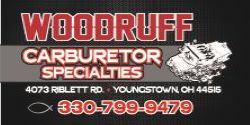OMG, has it been ages since I’ve posted! That doesn’t mean I haven’t been busy working on the Fury, just been pushing along at a slow and steady pace and limiting my weekly spending. All that being said there’s been a ton of progress, including:
* Got a hydraulic T/O bearing from Ram
* Got the clutch kit from McCleod
* Got all the clearances set for the T/O bearing
* Mounted the trans to the engine and dropped them in place (had to remove EVERYTHING in front of the radiator because my engine is set back so far the cherry-picker wouldn’t reach)
* Made all the necessary electrical connections, hit the key to test it all and immediately smoked my Edelbrock ECU! And when I say “smoked”, it literally began smoking! Pulled it out, contacted Edelbrock customer service, and long story short, had a replacement ECU (already set up for my engine specifics) in hand within 2 weeks! Absolutely AMAZING customer service! Yes, the replacement works perfectly.
* Ordered a drop-in fuel tank from a ‘65 -‘68 Mustang (efi ready w/ a 340lph pump), cut the floor out of the trunk, and got the tank mounted solidly using nut-serts around the perimeter. I very much dislike under-hung fuel tanks like those in original Mopars and since I replaced the trunk floor years ago I made the decision then to use a Mustang tank.
* Ordered up all my fittings and soft lines to mate the pump to the hardlines and from the hardlines to the fuel rails. Had a lousy experience with Summit branded -AN fittings, 2 -8 45’s leaked regardless of what I did, so I changed them out for another brand and cured both leaks.
* Got all the electrical connections and rheostat in place for the electric power steering pump (a Ford unit made for Volvo)
* “Nut & Bolted” the entire car from front to back
* Installed the passenger side header then found my full size starter wouldn’t fit with the driver side header, so ordered up a starter from a mid ‘90’s small block RAM, dropped it in place and slid the header in from below. Once they were in place I ran both the battery cable and trigger wire, which closed out the final bit of wiring for the entire car.
* Knowing the engine would be sitting idle for a few months I’d left the rocker shafts lose (wanted to keep pressure off the springs and the valves closed) so I bolted the shafts down and ran the valves.
* Went to fill it up with oil and found there is no easy or quick way to do it, the baffles in the rocker covers have very little clearance so pouring oil in there doesn’t seem feasible. Pouring oil directly into the rocker valleys won’t work because the drain-back holes are high on the heads and don’t drain fast enough to be feasible, and the valley tray and intake were already in place so that was a “no go”. I ended up shoving a funnel end down towards the push-rod holes on a cylinder that had at least one valve open (to get JUST enough clearance) and spent 20 minutes getting 12 qts in (7 in the Milodon pan, 2 in the dual filters, and 3 in the Accu-sump).
* Filled my Accu-sump with 75psi of pressuere and used soapy water to look for leaks; none found so I dropped the pressure down to 7psi and followed the instructions for filling it with oil. I am convinced I’ve either got a defective switch or have my lines mixed up because when I primed the engine with the key off the Accu-sump showed pressure, which it def should not, it should only see oil pressure with the key (and switch) on. Knowing I have more than enough oil in the engine I wasn’t concerned so I continued with priming, rotating the crank as I went. Saw oil coming out of the rocker shafts so bolted down the valve covers.
* Dropped the dizzy back in after putting the crank at 12 degrees BTDC and tightened it down.
* Filled the engine and rad with water, checked the fan “on” setting in the software, and took a minute to think about anything I may have missed.
* Turned the key and within a couple revolutions of the crank she fired! Mmmmmmm, the smell of 110 octane burning in my fresh engine was glorious!
40 - 45psi oil pressure at hot idle, 70 - 90+ when revving. Need to get the Milodon adjustable bypass figured out because that’s def more psi than necessary.
Broke the solid lifter flat tappets in for 25 - 30 minutes and believe I made it through without flattening a lobe, but we’ll see when I pull the rockers to install the inner springs.
After the break-in I dropped the idle down with the idle screw so the ECU could take over and it idled perfectly, albeit too low, at about 780 rpm. During break-in it sounded like #7 exhaust valve adjustment was too lose so I didn’t want to mess around too much once the cam was broken in so I didn’t try to adjust the timing or idle speed, I’ll do that after I put the springs in.
Def have some oil leaks in and around the Accu-sump hoses so I’ll be looking into those, but overall, what a win!
















